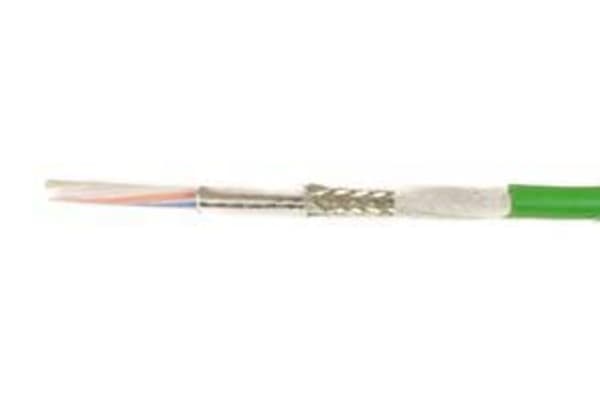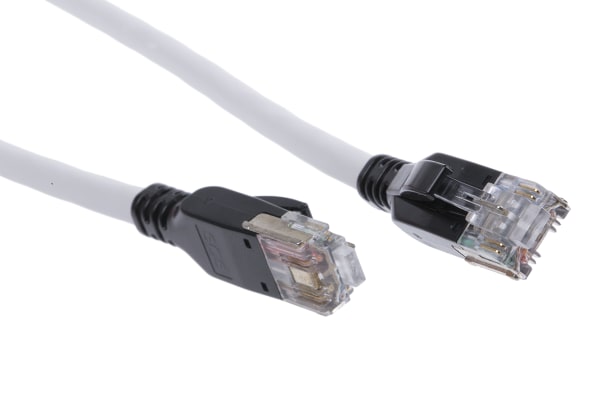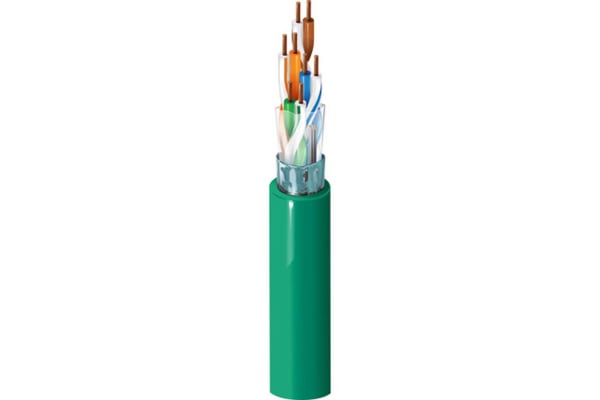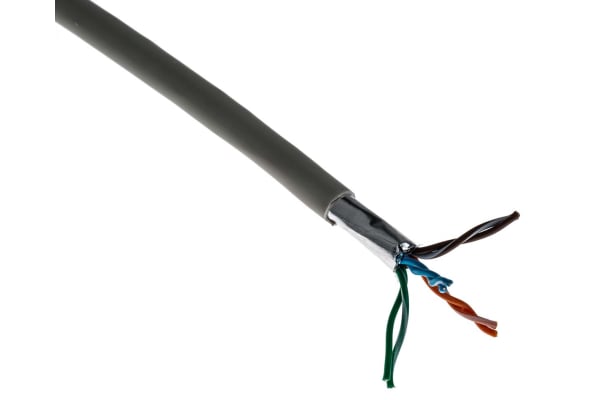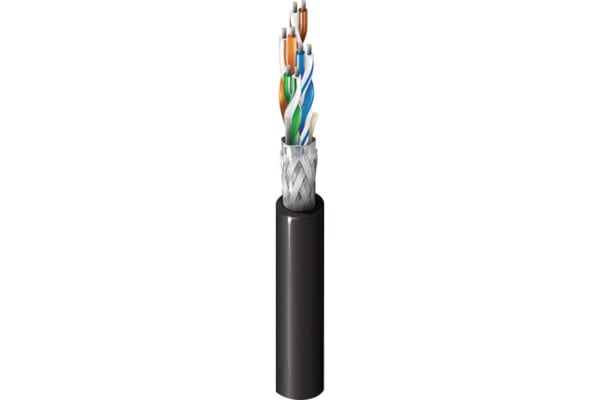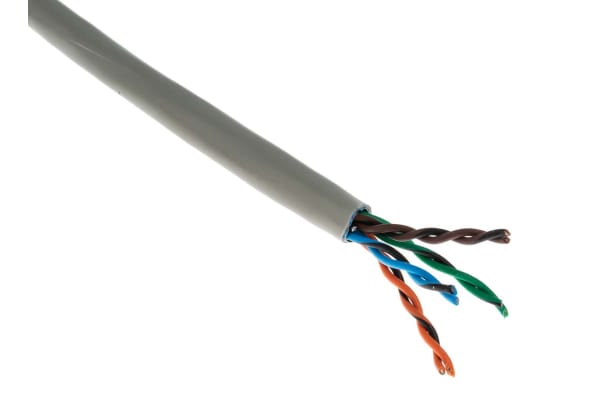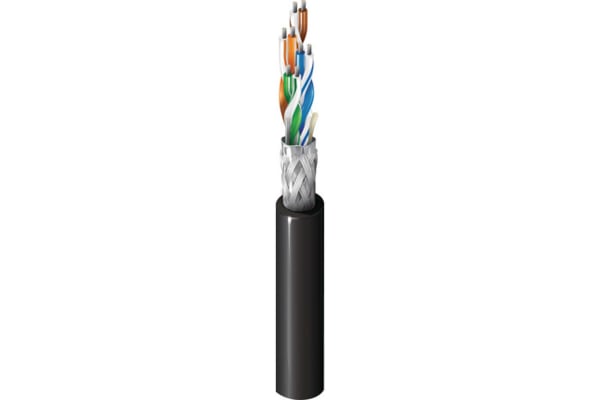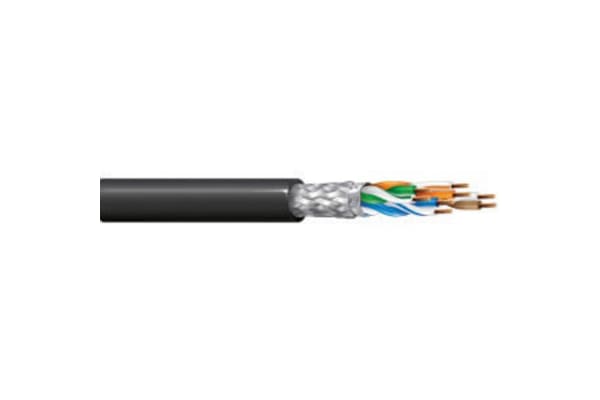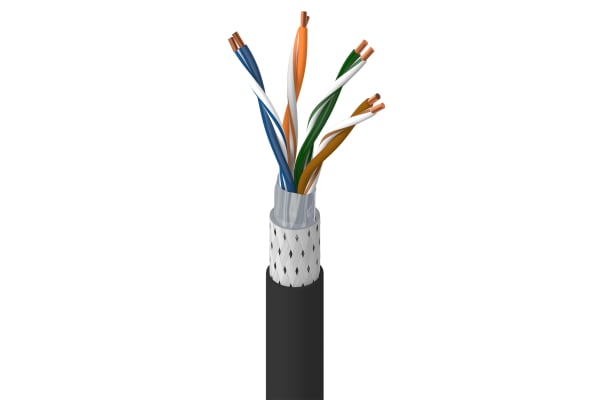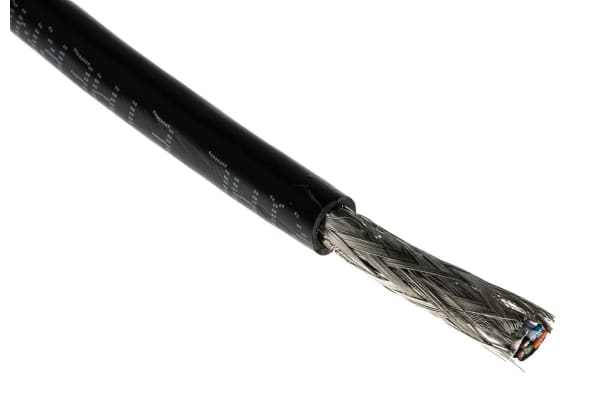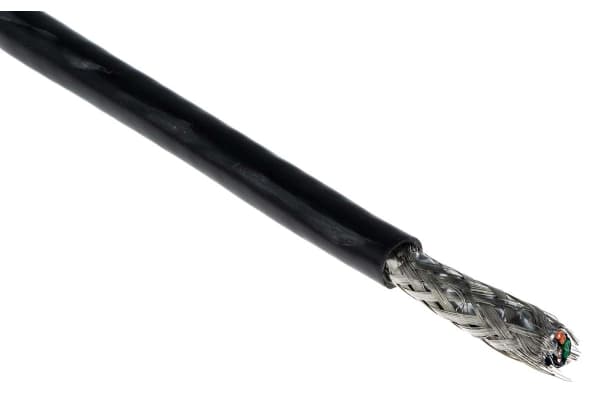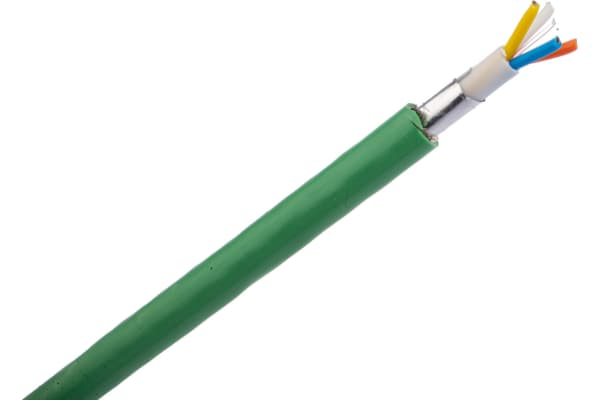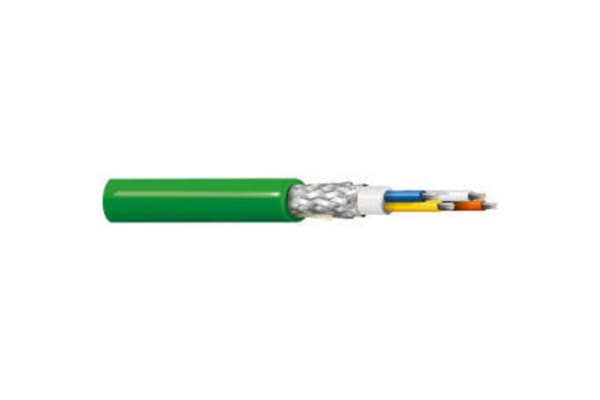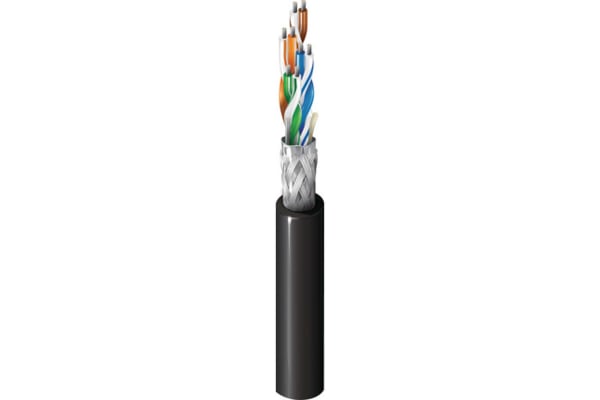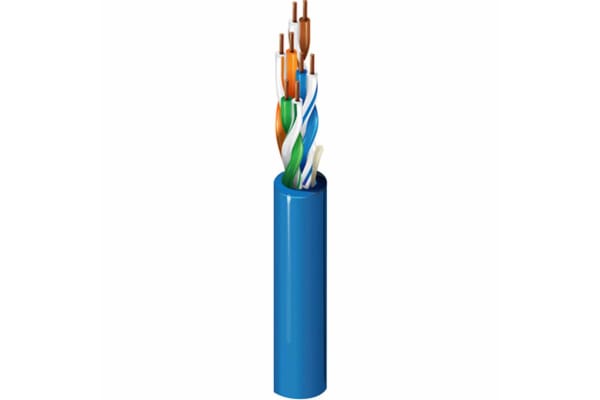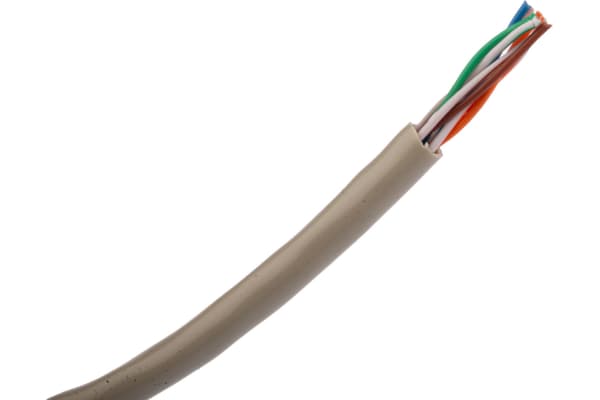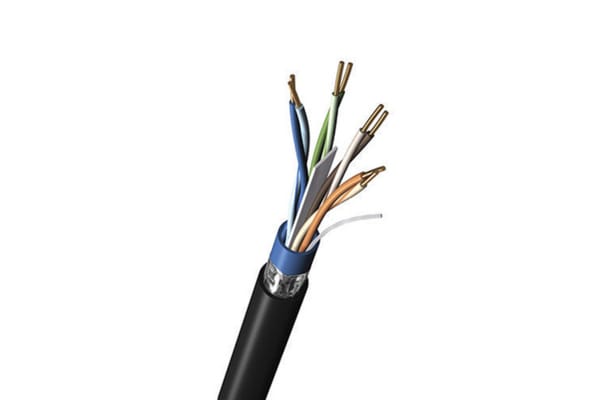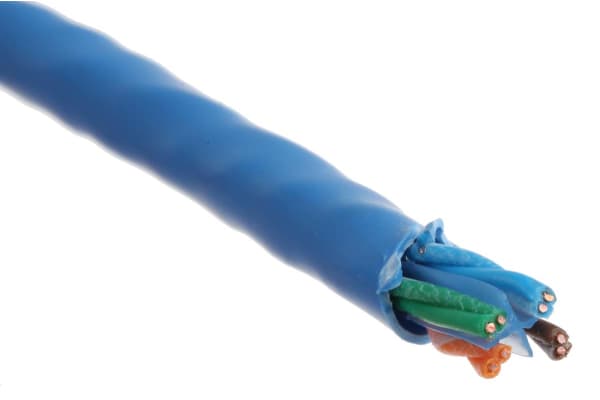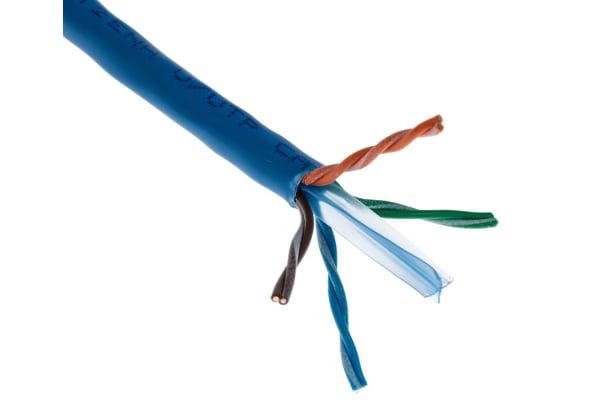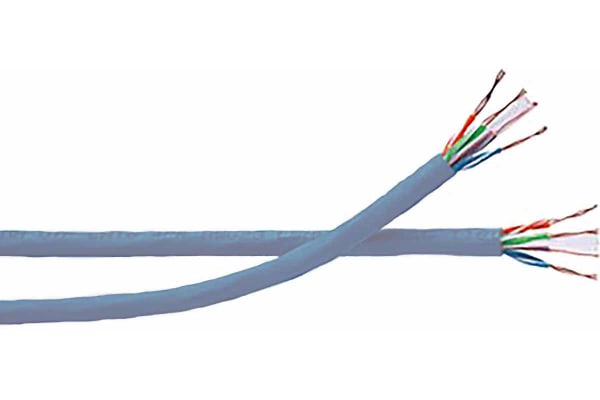Cat Cables
Cat5E Ethernet cables are one of the most popular types of network cable for connecting computers, modems, routers and other wired internet capable devices. Cat5E cable (which stands for “Cat5 Enhanced”) offers significant performance improvements over standard Cat5 Cable, including up to 10 times faster speeds.Cat5e cables are made of 4 pairs of twisted wire (8 total wires) that have a copper core with a colour coded insulation. The cores of Cat5e cable can be solid or stranded wire, solid core cables have a single copper core and are designed for use in permanent and semi-permanent installations over long distances. Stranded core cables have multiple strands of copper conductors twisted together, typically designed for patch cords to connect PC’s and internet equipment over shorter distances.ShieldingCat5e network cables are available with various types of shielding that suit many different installations. The shielding type is identified by specific abbreviations. These abbreviations are used to create an acronym of the shielding type a specific cable has. Below are the most common shielding types: UTP or U/UTP Unshielded Twisted Pair F/UTP Overall Foil Shield + Unshielded Twisted Pair U/FTP No Overall Shield + Each Pair Foil Shielded S/FTP Overall Braided Shield + Each Pair Foil Shielded SF/UTP Overall Foil and Braid Shield + Unshielded Twisted Pair F/FTP Overall Foil Shield + Each Pair Foil ShieldedWhat’s the difference between Cat5 and Cat5e cable?Cat5 cable and Cat5e cable have several differences, the most important are as follows: Network support – Cat5 cable will support 10/100 Ethernet. That is, Ethernet and Fast Ethernet. Cat5e cable will support 10/100/1000 Ethernet, Fast Ethernet, and Gigabit Ethernet. Cat5e cable can be used in any application in which you would normally use Cat5 cable. Less crosstalk – Crosstalk is the electrical interference that results when one wire’s signal affects another wire’s signal. Cat5e cable has been improved over Cat5 cable in this respect, and crosstalk has been greatly reduced. Bandwidth – This is directly related to network support, in the sense that the bandwidth is the information-carrying capacity of a system. The greater the bandwidth, the greater the data carrying capacity in a given period of time. Cat5e cable is rated at 350 megahertz, and it is this increased bandwidth (compared to Cat5 cable) that allows it to support Gigabit Ethernet.
-
Alpha Wire Cat5 Ethernet Cable, SF/UTP Shield, Green PUR Sheath, 152m, Unterminated
IDR8,487,489.02Reel (1 Reel of 152 Metres) -
Bel-Stewart Cat7 Ethernet Cable, ARJ45 to ARJ45, Shielded Shield, Grey, 5m, Terminated
IDR1,311,439.67 -
Belden Cat5e Ethernet Cable, F/UTP Shield, Grey LSZH Sheath, 100m, Unterminated
IDR2,113,848.17Reel (1 Reel of 100 Metres) -
Belden Cat5e Ethernet Cable, F/UTP Shield, Grey LSZH Sheath, 305m, Unterminated
IDR7,011,686.72Reel (1 Reel of 304 Metres) -
Belden Cat5e Ethernet Cable, F/UTP Shield, Grey PVC Sheath, 100m, Unterminated
IDR1,636,284.00Reel (1 Reel of 100 Metres) -
Belden Cat5e Ethernet Cable, F/UTP Shield, Grey PVC Sheath, 500m, Unterminated
IDR20,798,428.32Reel (1 Reel of 500 Metres) -
Belden Cat5e Ethernet Cable, S/FTP Shield, Grey PVC Sheath, 500m, Unterminated
IDR18,624,583.07Reel (1 Reel of 500 Metres) -
Belden Cat5e Ethernet Cable, SF/UTP Shield, Black LSZH/FRNC Sheath, 305m, Unterminated
IDR17,683,719.77Reel (1 Reel of 305 Metres) -
Belden Cat5e Ethernet Cable, SF/UTP Shield, Black LSZH/FRNC Sheath, 305m, Unterminated
IDR17,521,664.72Reel (1 Reel of 305 Metres) -
Belden Cat5e Ethernet Cable, SF/UTP Shield, Black PVC Sheath, 305m, Unterminated
IDR16,408,047.59Reel (1 Reel of 305 Metres) -
Belden Cat5e Ethernet Cable, SF/UTP Shield, Black PVC Sheath, 305m, Unterminated
IDR16,778,099.51Reel (1 Reel of 305 Metres) -
Belden Cat5e Ethernet Cable, SF/UTP Shield, Green PVC Sheath, 305m, Unterminated
IDR18,899,709.54Reel (1 Reel of 305 Metres) -
Belden Cat5e Ethernet Cable, SF/UTP Shield, Green PVC Sheath, 305m, Unterminated
IDR16,862,221.29Reel (1 Reel of 305 Metres) -
Belden Cat5e Ethernet Cable, SF/UTP Shield, Grey LSZH Sheath, 100m, Unterminated
IDR3,090,164.29Reel (1 Reel of 100 Metres) -
Belden Cat5e Ethernet Cable, SF/UTP Shield, Grey PVC Sheath, 100m, Unterminated
IDR2,679,310.16Reel (1 Reel of 100 Metres) -
Belden Cat5e Ethernet Cable, U/UTP Shield, Blue PVC Sheath, 305m, Unterminated
IDR15,457,849.08Reel (1 Reel of 304 Metres) -
Belden Cat5e Ethernet Cable, U/UTP Shield, Grey LSZH Sheath, 100m, Unterminated
IDR1,603,768.10Reel (1 Reel of 100 Metres) -
Belden Cat5e Ethernet Cable, U/UTP Shield, Grey PVC Sheath, 100m, Unterminated
IDR1,383,079.54Reel (1 Reel of 100 Metres) -
Belden Cat5e Ethernet Cable, U/UTP Shield, Grey PVC Sheath, 304m, Unterminated
IDR8,634,020.35Reel (1 Reel of 304 Metres) -
Belden Cat5e Ethernet Cable, U/UTP Shield, Grey PVC Sheath, 305m, Unterminated
IDR3,251,380.22Reel (1 Reel of 304 Metres) -
Belden Cat6 Ethernet Cable, F/UTP Shield, Black PVC Sheath, 305m, Unterminated
IDR31,278,617.56Reel (1 Reel of 305 Metres) -
Belden Cat6 Ethernet Cable, U/UTP Shield, Blue LSZH Sheath, 100m, Unterminated
IDR2,725,881.32Reel (1 Reel of 100 Metres) -
Belden Cat6 Ethernet Cable, U/UTP Shield, Blue LSZH Sheath, 304m, Unterminated
IDR8,627,622.06Reel (1 Reel of 304 Metres) -
Belden Cat6 Ethernet Cable, U/UTP Shield, Grey PVC Sheath, 100m, Unterminated
IDR2,145,629.84Reel (1 Reel of 100 Metres)



